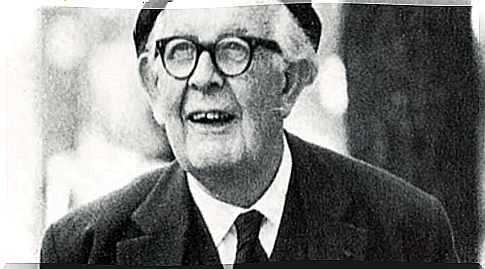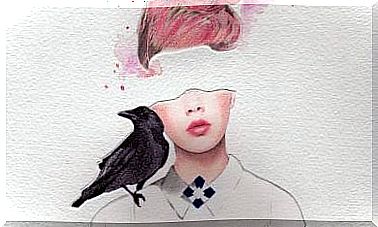Description And Characteristics Of Symbolic Thinking

Do you know what symbolic thinking is? Do you know how it manifests? Symbolic thinking is what allows people to talk about past events, as well as hypotheses about what may happen in the future. In other words, it allows you to get out of a current situation to evoke another reality, be it past or future.
Thus, these types of thoughts allow you to go beyond what your senses are currently capturing through memories and hypotheses. Today’s article will discuss the characteristics of this type of thinking in more detail, as well as give you examples of different manifestations.
What is symbolic thinking?
We can define symbolic thinking as the ability to think about the current situation. In other words, it is a type of thinking that allows you to visualize reality in a given environment, according to personal experiences.
The Swiss psychologist Jean Piaget (1896-1980) contributed a lot of information about symbolic thinking. He devoted himself to defining and explaining the different stages of cognitive development a child undergoes. According to him, symbolic thinking means that a child is able to use signifiers to refer to meanings.

Piaget’s preoperative thinking
According to Piaget, symbolic thinking is part of preoperative thinking. This is a broader concept that will go through three stages during development.
- Symbolic thinking
- Egocentrism (the child can not distance himself from his own point of view)
- Pre-conceptual prelogical thinking
As you can see, Piaget’s model for symbolic thinking lies within the preoperative period from the age of two to six years.
Manifestations of symbolic thinking
According to Piaget, there are a number of manifestations in the development of the child that make this process possible during the formation and consolidation of symbolic thinking. These are:
- imitation
- symbolic play
- a verbal evocation of events that are not present
- drawings
- visualization
In other words, symbolic thinking becomes latent and gradually consolidated through all these manifestations.
How do people express symbolic thinking?
You have seen some examples in the early stages of life, according to Piaget (aged two to six). But now we are going to dive deeper into it. Some of the most important manifestations of this type of thought are the following.
Language
This is one of the most important manifestations of symbolic thinking, as it is based on symbolization. What does this mean? This means that the verbal keys you describe reality with are not what they point to, but rather a translation into abstract terms.
In other words, people use language to represent reality through symbols, in this case words, and the same thing happens with symbolic thinking. Thus, you represent something outside your mind, but this process goes through an earlier filter, the mind itself.
Similarly, symbolic thinking is activated when you read, for example. This is what allows you to imagine the scenarios and characters you become familiar with through your reading. Once again, it is a way to evoke a reality that is not yours through your imagination.
Moreover, an entire universe was captured in novels or texts of some kind created in the minds of others in the past. Symbolic thinking is also about this.
The symbolic toy
Another manifestation of symbolic thinking is symbolic play. Thus, the latter acquires special relevance in the early stages of life. In other words, in childhood, when the child’s development is in full expansion. Thus, symbolic toys are important for development, especially for the first social relationships, and also for acquiring the right habits for a given society.
Through symbolic play, children create environments, characters, the use of objects and roles using their own play with the various toys or objects, mainly based on symbolic thinking. In addition, they attribute properties to inanimate objects. For example, using a banana as a phone.
Symbolic play occurs because the child already has certain cognitive resources such as abstraction, analogy (equality of two objects by having common features) and the symbolic thinking itself.
According to Piaget, symbolic play is shown around the age of two, that is, when the child has a feeling of the permanent object. That is, they understand that an object still exists even if it is not in their field of vision. The reality is that people never stop playing, and that almost always means learning.

Drawing and painting
Both children and adults graphically represent one (or more) realities through drawing. Moreover, this reality is rarely in front of them when they do. That is, you shape what you want to evoke through symbols. Thus, drawing is the ability to use symbols to refer to meanings due to symbolic thinking.
Thus, both drawing and painting allow to represent something from the outside in a certain way, but also the ideas in the mind. As you can see, this is what symbolization is all about.
When it comes to culture and society, cave paintings and hieroglyphs contain a large part of human memories. That is, it is a large part of human history in these manifestations.
In addition, color drawings allowed many societies to transfer their identity stamp, to register what distinctive characteristics they had and the legacy they could extend beyond physical survival. You can find a clear example of this in flags or in illustrations of them.









